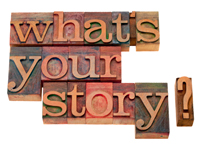Activity 2.1

You might like to try creating your own timeline. However, for some people it can be very difficult to look back over their life or experiences; it may bring to mind some issues or memories that they would rather not confront. If this is the case, the timeline activity can be omitted. Alternatively, you may find it useful to discuss the events in your life with a person you trust.
But do bear in mind, your timeline doesn’t need to cover your whole life. You can choose to focus on just a few key events.
Activity 2.1 My timeline
Having looked at the examples try drawing your own timeline.
The actual timeframe will be up to you – it can include your whole life since childhood, or you might want to focus on your career, family life or, if you also have a caring role, your experience of life as a carer.
Go to Activity 2.1 in your Reflection Log. Once you have completed your activity, make sure you save the document again. Or you can use this document [Tip: hold Ctrl and click a link to open it in a new tab. (Hide tip)] to plot your timeline, but don’t forget to save it.
You could use the drawing tools available in most word processing programs, such as Microsoft Word, to produce your timeline or other diagrams.
If you’d like to look at further IT options, you can use a free online software program to create images like the ones included in this course. Go to bubbl.us and click on Welcome, then on the main page select ‘Learn how to use bubbl.us’, and this will show you how to get started. (This is not an Open University website and the OU is not responsible for third party websites such as this or the information you choose to share with them.)
If you prefer not to use bubbl.us, or any other online tools, don’t worry – pen and paper will do just as well! You can print off the document above.
You may have other ways of representing your timeline. What is important in this activity is the information or understanding from your experience that is brought to mind. So, if you prefer, you can simply make a list of the high points and low points of the period of your life and reflect on these.
Remember, it’s up to you what you want to include and the timeframe you want to focus on – your whole life, or a specific period. Try to put low points lower down the page and high points above them, just as Lesley and Scott have done, but if your life has fewer ups and downs then just list them side by side. You do not need to include anything that you want to keep private.
If you are working in a group, or with a mentor, you might want to share and discuss your timeline.
Keep your timeline safe, you’ll need to refer to it for Activity 2.3.
Taking stock of my experiences over time
